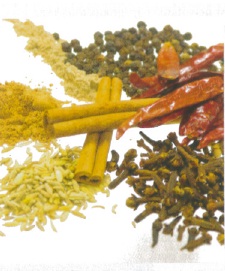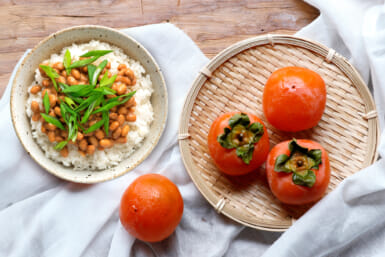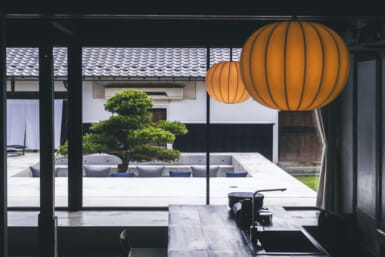by Christine Cunanan-Miki
It was a humid evening and we were hankering for good curry as part of the usual rites of summer. “Why don’t we go to Taj?” My husband suggested, referring to a low-key Indian restaurant in Akasaka that has been in business for 32 years. A quiet and relaxing meal there seemed just the thing to beat the heat, so I quickly agreed.
The Taj is known for its flavorful curries and rather fancy atmosphere. There’s none of the usual cramped seating and colorful, kitschy interiors that you find in more well-known Indian restaurant chains. Instead you have a calm dining space done up in ivory and white, with wood relief sculptures on the walls and decorative items scattered about. Even the background music is more chill-out than break-out-into-a-Bolly-wood-dance style.
When we walked in, Mr. Roy, an old Tokyo hand who has been managing The Taj since 1982, was by the door waiting to greet guests. We wanted to eat a little bit of everything so he helped us plan a menu that included three kinds of tandoori meat for the first course, and three curries for the main course; plus broiled lentil, South Indian pancakes, and two types of nan for good measure.
“Can we eat all that?” My husband asked worriedly, like any sensible person, after we reviewed our orders and I announced that I definitely wanted to have Indian ice cream and cottage cheese cakes for dessert as well. “Don’t worry,” Mr. Roy replied, with a twinkle in his eye. “I’ll give you half portions of everything. We’re very flexible here. This is not the army.” And thank goodness it wasn’t. It would not have been as fun either, if we had just ordered one curry to share and not experienced the joy of dipping our nan into contrasting textures, colors, and flavors.
Mr. Roy agreed. “Indians always have at least two or three kinds of curries on the table,” he told us. “If an Indian man sat down to dinner and there was only one type of curry on the table, he would look at his wife or the family cook and ask, ‘What is this? Is something wrong?'”
The Taj’s curries are slow-cooked with a chockfull of spices from 10am daily, resulting in thick sauces with little oil. “A good curry shouldn’t have so much oil on top or feel too oily in your stomach after ten minutes,” our in-house expert said. “This is how to tell a ‘shortcut curry’ from the real thing.”
The three curries we ordered proved an ideal, delicious combination. The spinach curry (Palak Panir, ¥1,890) was mild and heavy with chopped spinach and soft cottage cheese that gelled together into delicious goo topped with shredded ginger. Meanwhile, the prawn (Prawn Masala, ¥2,310) and mutton curries (Mutton Masala, ¥2,310) had a spicier, creamier sauce that reeked of chili, turmeric, and tomatoes.
One of Taj’s specialties is Lamb Chop Jehangiri (¥2,625), a tender cut from lamb racks that is marinated in spices, salted, then cooked in the tandoori oven. We dabbed yoghurt mint sauce on this and added some raita (another kind of yoghurt sauce with spices, ¥525), and thoroughly enjoyed the merging of sour-sweetness and saltiness.
Another favorite is the very mild Dal Tadkewali (¥1,050), a dish of lentils broiled in butter and spices that is comforting to eat after a series of spicy curries. “Both the poorest man and the richest man in India will almost certainly have this dish on their respective dinner tables,” said Mr. Roy. And our meal at Taj was certainly one both would have enjoyed.
WHAT TO EAT
Start with Pani Poori (¥672), a crispy pastry served with tamarind chutney, and Lamb Chop Jehangiri (¥2,625), a house specialty. Order a variety of curries to be accompanied by rice and Paratha Lacchedar (¥630), a softer, wheat-based nan. Finish the meal with home-made Indian ice cream (Kulfi,¥630) and soft cottage cheese cakes flavored with cardamon (Rasmalai, ¥735). A bowl of yoghurt sauce with freshly chopped spices (Raita, ¥525) is worth the extra cost because it livens up everything.
WHAT TO DRINK
As many yoghurt drinks as possible! Indians swear by them (Lassi, ¥567) as an accompaniment to the meal and a digestive aid. Order a salty lassi sprinkled with cumin with your meal, and then have a sugared or mango lassi afterwards.
WHERE TO SIT
The window tables used to be the best in the house until road construction marred the view. They’re’ still recommended because they’re quieter and more spacious than the tables in the main area.
HOW MUCH DID IT COST?
Plan on spending upwards of ¥12,000 for a proper dinner for two. However, the restaurant is also willing to work the other way around. Give them a (reasonable) budget, and they’ll make a meal for you.
WHO GOES THERE?
The Akasaka corporate crowd, expatriates, and politicians and bureaucrats who walk down from Nagatacho. The Taj counts several prominent Diet members and cabinet ministers as loyal regulars. At lunch, they also get the Indian IT crowd who love the ¥1,200 buffet.
WHO TO ASK FOR
Representative Director Abishek Roy is the one to see about any request—including whipping up a special curry, catering an office party, or discussing Indian cuisine and table etiquette.
INFO
The Taj
3-2-7 Akasaka, Minato-ku, Tokyo
Tel. 03-3586-6606










